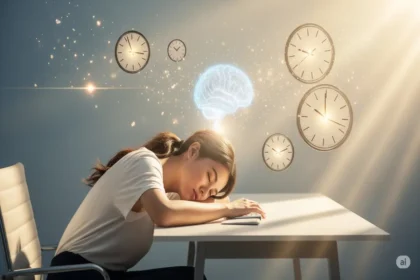The soft embrace of night, the gentle drift into unconsciousness, and the vibrant theatre of our minds at rest – sleep and dreaming are universal human experiences. Every person on Earth, regardless of their origin, must eventually succumb to the call of slumber. Yet, while the biological imperative to sleep is hardwired into our DNA, the how and what of our nightly repose are surprisingly varied. From the bustling streets of Tokyo to the serene villages of the Amazon, cultural norms, historical practices, and even philosophical beliefs profoundly shape how we approach sleep and dreaming explained through the lens of human diversity.
It’s a fascinating journey to explore, revealing that our “normal” way of sleeping might be just one thread in a rich, global tapestry. What we consider a good night’s rest, the environment we create for it, and the significance we attach to our dreams are all deeply imbued with cultural meaning, challenging our assumptions about the very nature of rest.
The Biological Blueprint: A Universal Foundation
Before we delve into the myriad cultural expressions of sleep, it’s important to acknowledge the shared biological foundation. Our bodies are equipped with an intricate internal clock, the circadian rhythm, primarily regulated by the suprachiasmatic nucleus (SCN) in the brain. This master clock orchestrates our sleep-wake cycles, hormone release (like melatonin), body temperature fluctuations, and countless other physiological processes over a roughly 24-hour period.
Sleep itself progresses through distinct stages: non-REM (NREM) sleep, which includes light sleep, deeper slow-wave sleep (crucial for physical restoration and memory consolidation), and REM (Rapid Eye Movement) sleep, where most vivid dreaming occurs. These stages, and the need for a certain amount of total sleep, are universal. However, the timing, environment, and social context of these biological processes are remarkably flexible, adapting to the cultural landscape.
The Rhythms of Rest: Cultural Variations in Sleep Practices
Step outside the Western norm of a single, consolidated “monophasic” night’s sleep, and you quickly discover a world of diverse sleep patterns.
The Allure of the Siesta
Perhaps one of the most famous examples is the siesta in Mediterranean and Latin American cultures. For centuries, a mid-afternoon nap was a common, almost sacred, ritual, allowing people to escape the hottest part of the day and return to work refreshed. This “biphasic” sleep pattern, splitting sleep into two segments, was once widespread even in pre-industrial Europe and America.
I remember a summer spent in a small Spanish town. Around 2 PM, the streets would empty, shops would close, and a profound stillness would descend. At first, as a productivity-obsessed American, I resisted. But the oppressive heat soon taught me the wisdom of the siesta. The afternoon nap wasn’t a sign of laziness; it was an intelligent adaptation to climate and a recognition of the body’s natural mid-day dip in alertness. While modern work demands and globalization have eroded the siesta in many urban centers, its cultural legacy persists, a testament to a different rhythm of life.
Sleeping Arrangements: From Solitary to Communal
In many Western societies, the “ideal” sleeping arrangement involves an individual bed, often in a separate room, promoting independence from infancy. The idea of co-sleeping, especially with parents and children, can be met with surprise or even concern. Yet, globally, co-sleeping is the norm for a significant portion of humanity.
In Japan, for instance, it’s common for infants and young children to sleep with their parents, often on futons that can be laid out on the floor. This practice, known as kawa no ji (river character), where the parents form the banks of a river and the child is the “river” in between, fosters a strong sense of family closeness and security. Similarly, in many African, Asian, and indigenous cultures, communal sleeping arrangements are traditional, driven by factors like safety, warmth, and fostering social bonds. The idea of a child sleeping alone might be seen as neglectful or even cruel.
These arrangements influence not just comfort but also the very structure of sleep. A parent co-sleeping with an infant might experience more fragmented sleep, but the infant often benefits from more stable breathing and temperature regulation. It highlights how cultural values – individualism versus collectivism, independence versus interdependence – are woven into the fabric of our nightly routines.
Pre-Sleep Rituals: A Global Tapestry of Wind-Downs
How we prepare for sleep also varies dramatically. In Japan, a long, hot bath (ofuro) is a common evening ritual, not just for cleansing but for relaxation and signaling the body to cool down for sleep. In parts of Europe, a calming herbal tea, like chamomile or valerian, is a traditional prelude to bed. In many indigenous cultures, storytelling around a fire or quiet reflection might precede slumber, connecting individuals to their community and ancestral wisdom.
Contrast this with the modern Western habit of scrolling through social media or watching stimulating TV shows right up until bedtime. These activities, laden with blue light and engaging content, actively suppress melatonin and keep the brain wired, often leading to difficulty falling asleep. Our rituals, or lack thereof, directly impact our ability to transition from wakefulness to rest.
The Dreamscape: Cultural Interpretations of the Unconscious
Beyond the physical act of sleeping, the cultural lens profoundly shapes how we perceive and interact with our dreams.
Dreams as Messengers: Prophecy, Guidance, and Healing
In many traditional and indigenous societies, dreams are not dismissed as random brain activity but are considered vital sources of information, guidance, and even prophecy. For the Senoi people of Malaysia, dream sharing and interpretation are central to daily life. Dreams are actively discussed each morning, and individuals are encouraged to confront and master their dream fears, believing this leads to greater courage and well-being in waking life.
Among some Native American tribes, dreams are seen as messages from ancestors or spirits, offering insights into personal challenges or community decisions. Dream catchers, for instance, are a well-known symbol, believed to filter out bad dreams and allow good dreams to pass through.
In contrast, modern Western culture, heavily influenced by scientific rationalism, often views dreams through a psychological lens (e.g., Freudian or Jungian interpretations) or dismisses them as neurological “noise.” While dream analysis exists in therapy, it rarely holds the same societal or spiritual weight as in other cultures.
Dream Content: Reflecting Cultural Anxieties and Values
While universal dream themes exist (e.g., falling, being chased), the specific imagery and narratives within dreams can be shaped by cultural context. A person living in a highly competitive, individualistic society might frequently dream of failing exams or being unprepared, reflecting societal pressures. Someone from a collectivist culture might dream more about community harmony or threats to their social group.
Consider the recurring nightmare of being naked in public. In cultures where modesty and social conformity are highly valued, this dream might carry immense shame and anxiety. In a more liberal culture, it might be interpreted differently or even with a touch of humor. Our waking anxieties, fears, and aspirations, which are themselves culturally influenced, inevitably seep into our nocturnal narratives.
The March of Modernity: Blurring the Lines
As globalization accelerates, traditional sleep and dreaming patterns are inevitably influenced. The spread of electric light, digital media, and 24/7 work cultures is homogenizing sleep habits, often to the detriment of health. The siesta is fading in many places, replaced by continuous workdays. Communal sleeping arrangements are giving way to individual bedrooms, even in cultures where they were once the norm.
Yet, this isn’t a one-way street. As Western science increasingly understands the profound importance of sleep, there’s a growing appreciation for some of these “traditional” practices. The benefits of napping are being re-evaluated, the importance of dimming lights before bed is gaining traction, and even the therapeutic potential of dream work is being explored in new contexts.
The diverse tapestry of sleep and dreaming across cultures offers a powerful lesson: there is no single “right” way to sleep or to interpret our dreams. Each culture has, over millennia, adapted its sleep practices to its unique environment, social structure, and belief systems. By understanding these differences, we not only gain a deeper appreciation for human diversity but also a richer perspective on our own relationship with sleep. Perhaps, by looking beyond our own cultural assumptions, we can learn to listen more attentively to our bodies’ natural rhythms and the profound messages that emerge from the mysterious, universal world of our dreams.
Disclaimer: The information provided in this article is for general informational purposes only and does not constitute medical advice. It is not a substitute for professional medical advice, diagnosis, or treatment. Always seek the advice of your physician or other qualified health provider with any questions you may have regarding a medical condition. Never disregard professional medical advice or delay in seeking it because of something you have read on this website.














